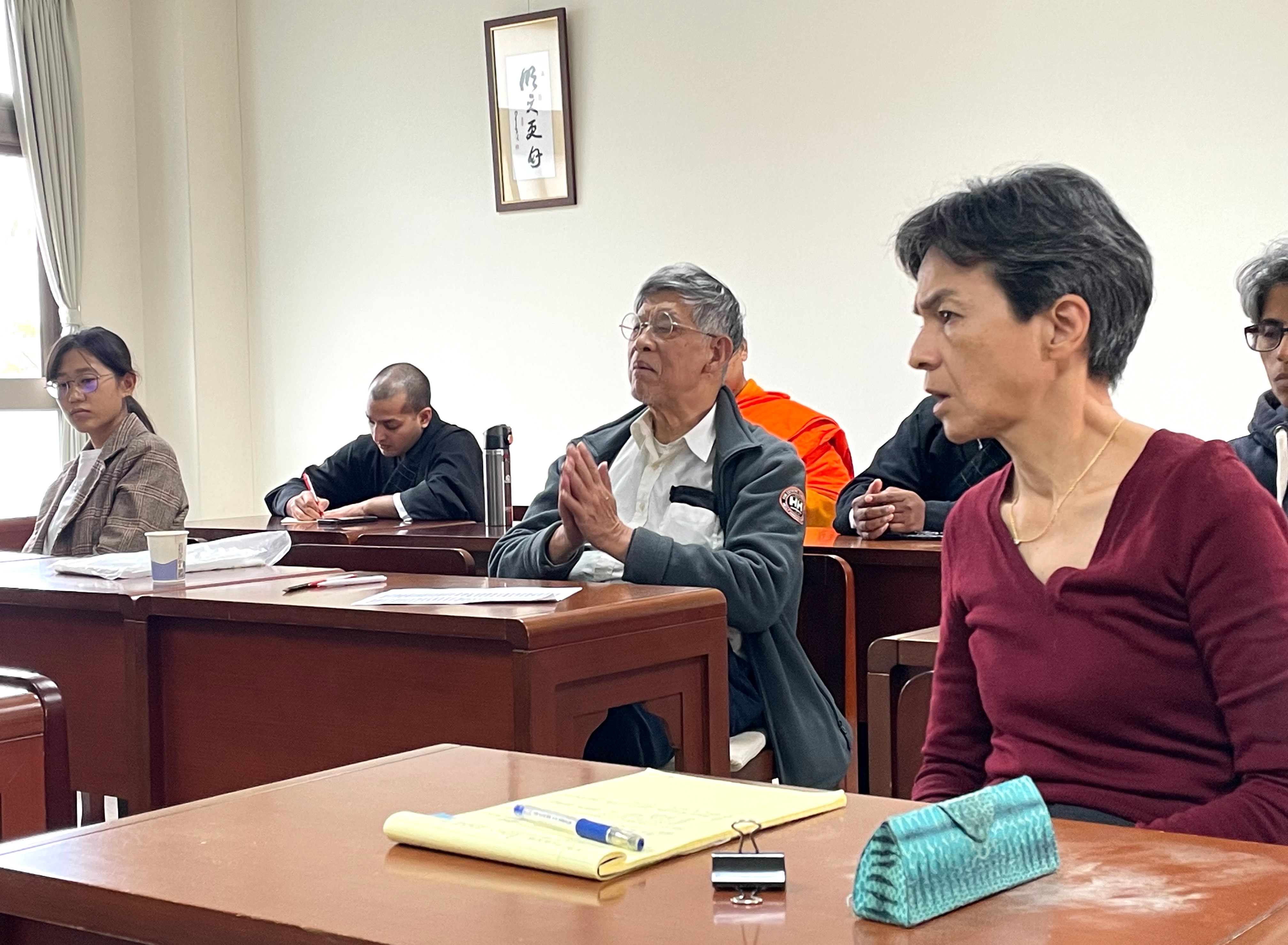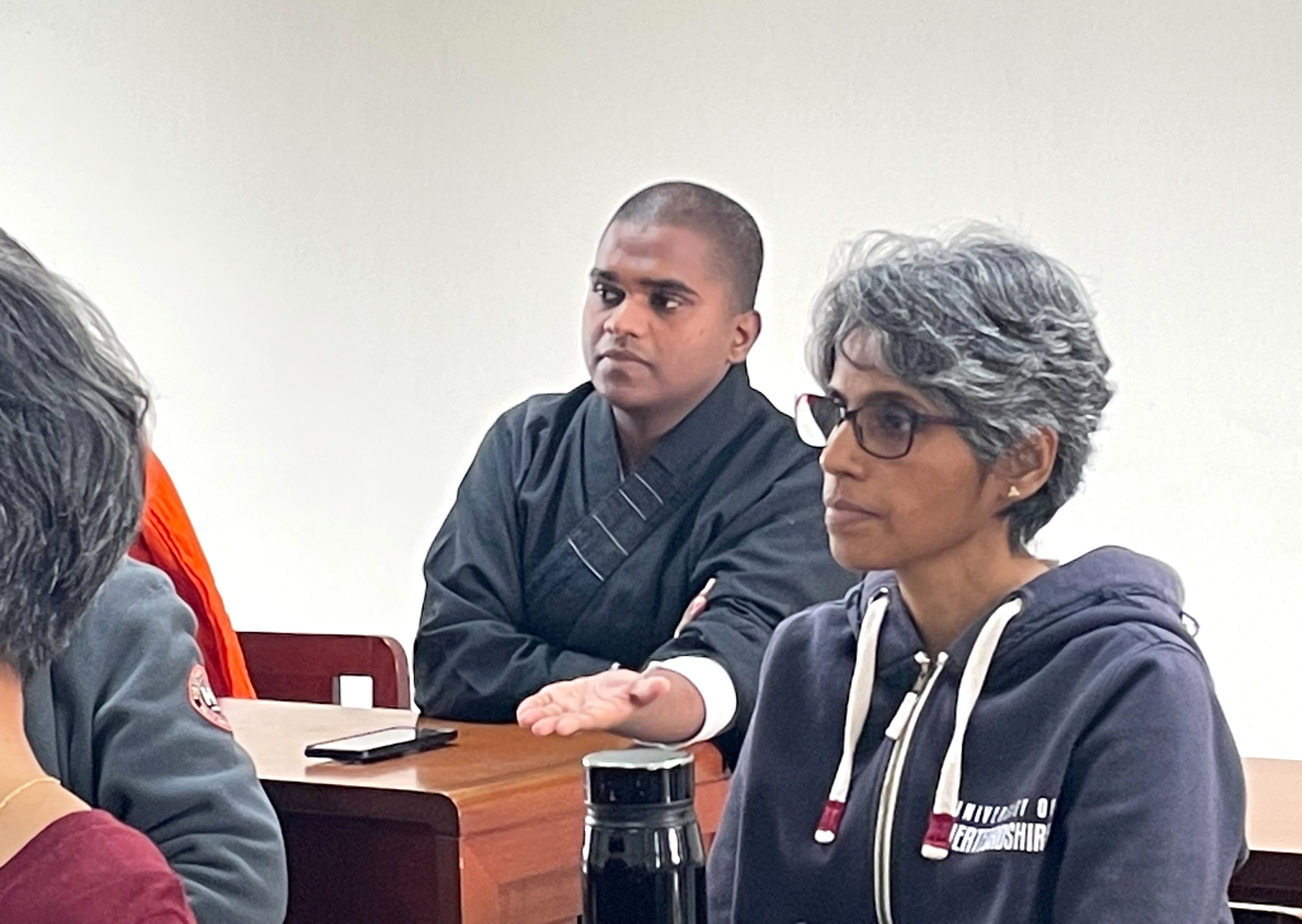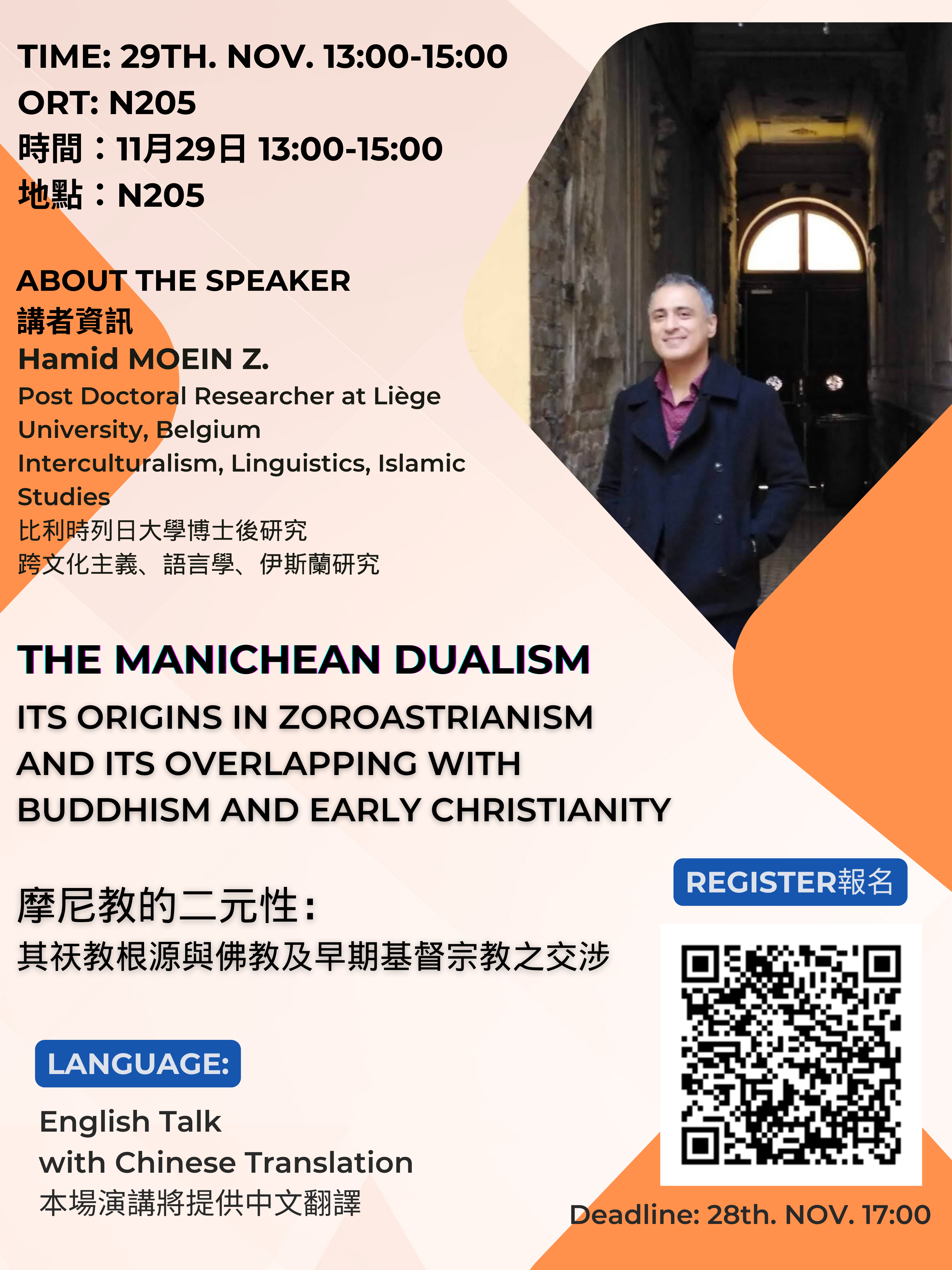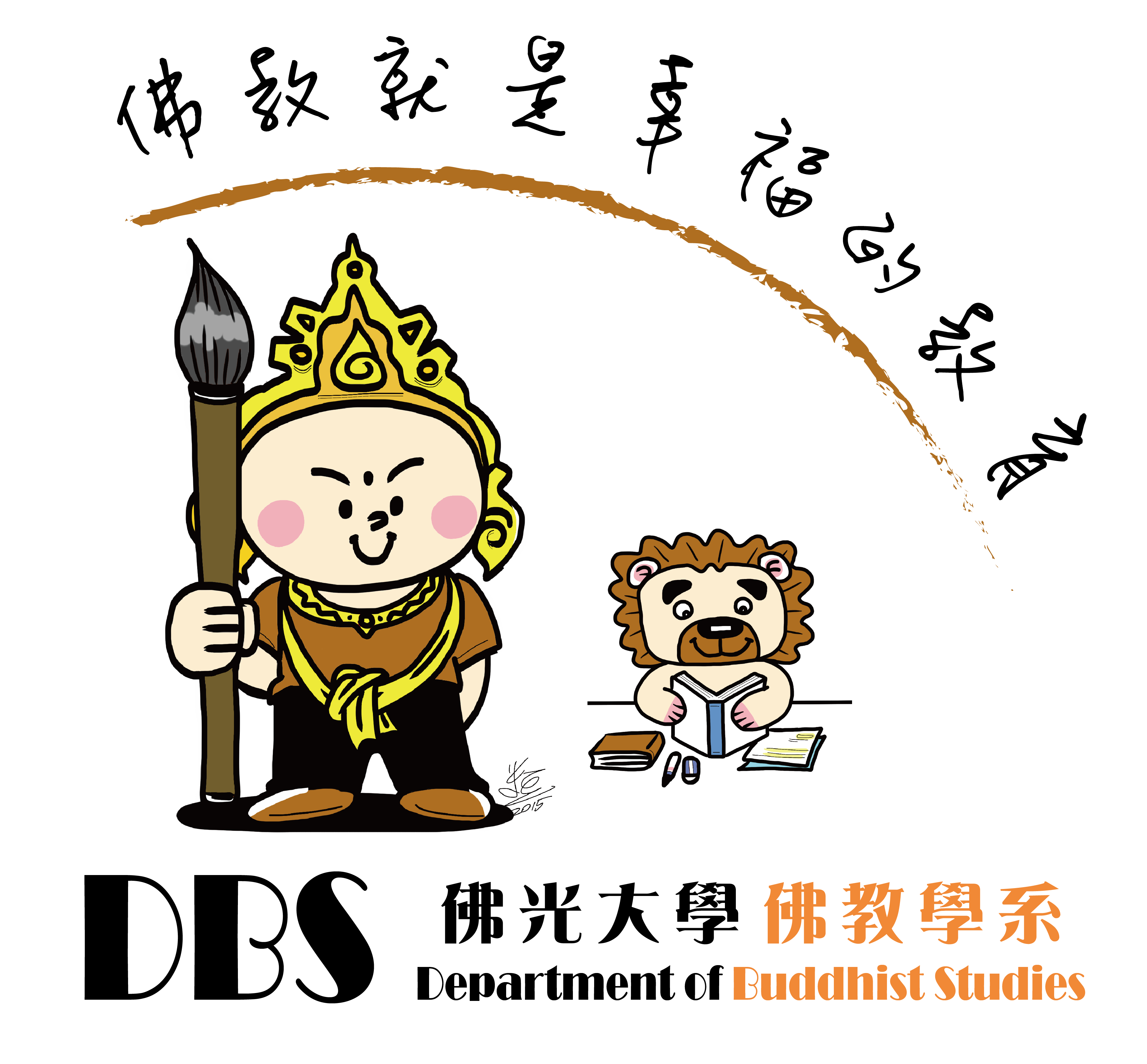Dr. Moein is a historical philologist, and his primary research focuses on Zoroastrianism and its related religious history. He is currently a postdoctoral researcher at the University of Liège in Belgium.
This lecture provided a brief explanation of the interaction between Manichaeism and Christianity, elucidating the dissemination paths of Manichaeism and opening up different perspectives for students. Dr. Moein began by discussing the background of Manichaeism, including its founding time, doctrines, and cosmology. He pointed out that the fundamental tenet of Manichaeism believes that the universe is composed by the "light and darkness." And Mani, the founder and religious leader, Mani, is the messenger of light.
Dr. Moein further explained the relationship between Mani and primitive Christianity. The Elcesaites were a faith community associated with primitive Christianity, venerating John the Baptist and engaging in religious practices such as fasting and asceticism. Mani's father was a follower of the Elcesaites, and Mani himself had initially joined the early Christian community under the influence of his father. Indeed, this is one of the factors contributing to the Christian elements within Western Manichaeism. After leaving Ctesiphon (near Baghdad) at the age of 24, Mani traveled to the Indus River Valley (modern-day Pakistan). It was during this time that he came into contact with Buddhism and incorporated its teachings into Manichaeism. This cross-cultural exposure played a significant role in shaping the syncretic nature of Manichaeism, blending elements from various religious traditions, including Christianity and Buddhism.
Manichaeism entered China via the Silk Road in Xinjiang before the Tang Dynasty, but it only truly entered the imperial court during the reign of Empress Wu Zetian. At that time, Manichaean missionaries referred to Mani as the "Buddha of Light." However, in the face of criticism from Buddhists and being summoned by Emperor Tang Xuanzong, they changed the title to "Mani, the Reincarnation of Laozi." Manichaeism was completely expelled during the reign of Emperor Tang Wuzong. In the Song Dynasty, due to the Manichaeans wearing white attire, which was considered incompatible with the local customs, and being exploited by the White Lotus Sect, they were labeled as "vegetarian demon worshippers." Many adherents were executed, and a large number of documents were burned. Therefore, despite a brief flourishing of Manichaeism in China, it did not leave behind significant written records.
Dr. Moein concluded by presenting a slide indicating that the last remaining Manichaean temple is the "Caoan" in Fujian, China. The appearance of the temple is indistinguishable from a Buddhist temple, making it difficult to identify.
The lecture was rich and engaging, with students from different countries and classes actively asking questions during the session. For example, Ven. Chongwen's discussion of the linguistic aspects of the names of religious figures added an interactive dimension to the lecture.





 College and Department of Buddhist Studies, FGU
College and Department of Buddhist Studies, FGU